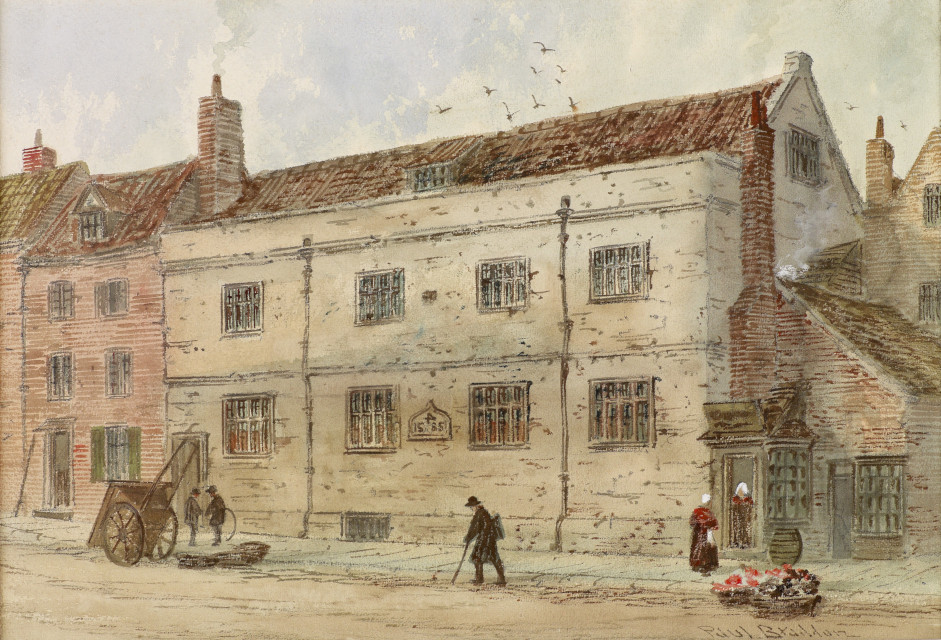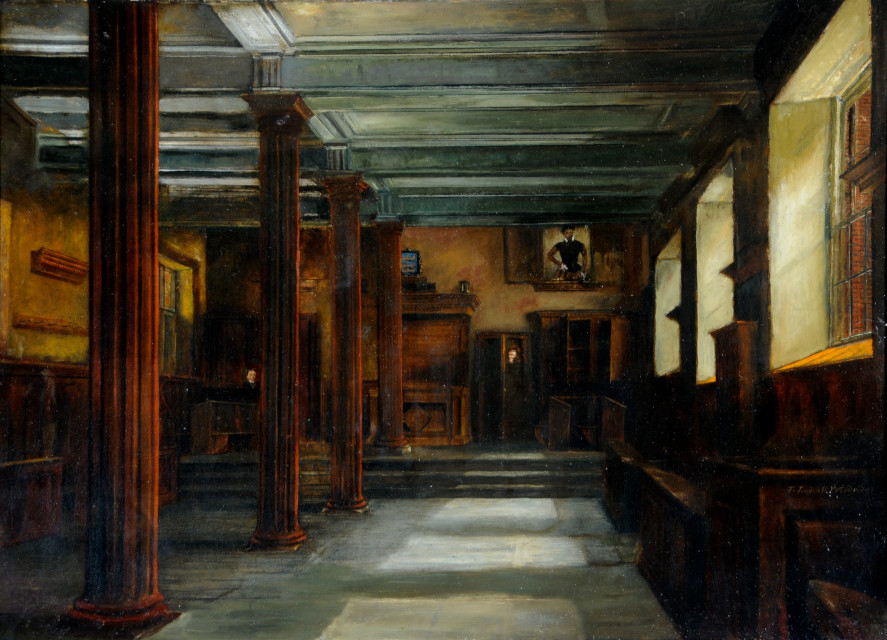You’ll find Hands on History Museum in the Old Grammar School, at the heart of Hull’s Old Town. Built in 1583, it’s the oldest secular building in the city.
The building replaced an earlier schoolroom, situated just to the east, which had existed from the mid-14th century. The schoolroom occupied the ground floor. While the upper floor was originally used as a meeting room by the Hull Society of Merchants. The funds for the building were largely donated by wealthy merchant William Gee. You can still see his merchant’s mark on the outside.

Old Grammar School, by Paul Braddon
Records from the 17th century suggest that around 100 boys, aged seven to 14, attended the school. Classical features, such as columns and wooden panelling, were added to the building at that time. The merchants left in 1706. After which the upper floor became Hull’s first assembly rooms for dancing and concerts.
The 18th century Grammar School was a popular choice for wealthy parents wishing their sons to go on to university. Famous pupils included Andrew Marvell, the politician and poet, and William Wilberforce who enrolled in 1766, at the age of 7. Over the next century the fabric of the ancient building deteriorated. And in 1878, the school abandoned the building.

Interior of the Old Grammar School, late 19th century
For several years, the building was used as a potato warehouse. Eventually, in 1883 the Vicar of Holy Trinity Church purchased the building for use as a Clergy-House and Choir School. A public appeal raised the money to restore the building and ensured its survival into the 20th century.
Hull City Council purchased the building in 1985, where it underwent a further programme of restoration work. It opened as a museum called The Old Grammar School in 1988. The displays also extended into the former Fish Street Day School and Church Institute next door.
The museum was renamed Hands on History in 1997. The ground floor has a reconstruction of a Victorian schoolroom, in the very space where Wilberforce and Marvel studied. The upper floor houses ‘The Story of Hull and Its People’ and the Egyptian Gallery.